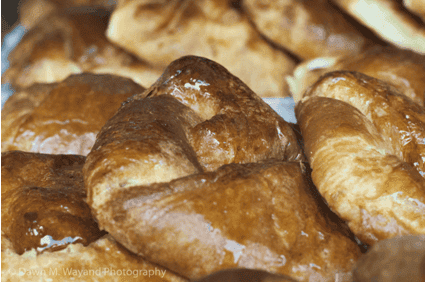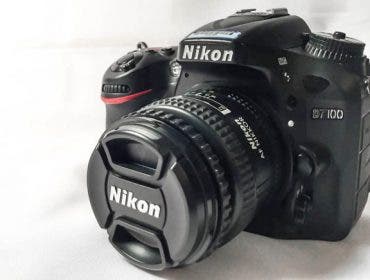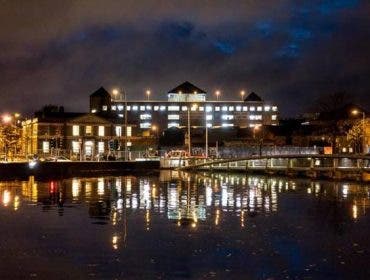Nikon 50mm f/1.4D AF Nikkor Lens
In 1995, Nikon released the fastest prime lenses on its lineup, the Nikon 50mm f/1.4 D AF Nikkor Lens, which is still considered one of its fastest prime lenses today.

Nikon 50mm f/1.4 D AF Nikkor Lens (Image via the Nikon website)
You can find the Nikon 50mm f/1.4 D AF Nikkor Lens at Adorama used for less than $334. What are the benefits of this 50mm lens and what’s missing? I have spent some time exploring the Nikon 50mm f/1.4 D AFNikkor Lens, which I was able to purchase new, and have some helpful thoughts on this lens.
Compatibility
While this lens was meant to work with all Nikon cameras, the autofocus feature – one of the most important features of the camera – will not will with older Nikons such as the D40, D60 as well as the D3000, D3100 and D5000 cameras. The newer f/1.4 lens should cover those models. This lens works on both full-frame and crop sensor cameras, though the lens is a 75mm equivalent with crop sensor cameras – making this lens perfect for portraiture.

Nikon 50mm f/1.4 D AF Nikkor Lens (image using a Nikon 28-105mm lens).
A 50mm to take the photo of the 50mm would’ve been nice!
Look and Feel
This tiny little powerhouse lens has a construction of 7 elements in 6 groups and weighs a little bit more than a baseball, the lens, coming in at a weight of 230g (8.1oz). Literally fitting in the palm of my hand like a baseball, it’s 42.5mm (1.7 inches) in length and has a diameter of 64.5mm (2.5 inches). This lens has a 52mm filter thread, which I always recommend to have a UV filter on a lens at all times, unless a situation requires no filter for optimal results – in that case of course – be very careful! For its compact size, the lens feels very durable – even though the barrel is constructed of polycarbonate – possibly due to the density of the glass and the aperture ring being metal. While the aperture ring is easy to turn and you can still distinctly hear each stop click. The markings on this lens are very clear and bold: it features a distance scale under a window, a depth-of-field scale with markings for f/11 and f/16 and an infrared index along with clearly marked aperture stops. There is a lock on the lens for an f/16 aperture.
While manual focus can only be achieved by overriding autofocus in the camera, the focus throw is very smooth and is short and sweet – a little less than a full turn of the wrist. I found this lens extremely light and convenient to carry and easy to use which is why it has become the lens I keep on my camera until another lens is warranted.

Shot at f/11 at 1/250 second in the studio.
Tack sharp eye with nice bokeh even at a stopped down aperture.
Image Quality
Where do I start with image quality? With such an open available aperture, this lens produces an amazingly creamy bokeh, making this a perfect lens for portraiture.

Shot at f/1.4 at 1/40 second (with only tungsten light present).
Unfortunately, you have to forego tack sharpness at that aperture, but this is typically remedied by stopping down.

Shot at f/1.8 at 1/30 second (with only tungsten light present).
At f/1.8, you can see that the center point of the image begins to get sharp while still retaining a nice bokeh.

Shot at f/2.8 at 1/10 second (with only tungsten light present).
But it is not until you stop down to about f/2.8 that the focus of the image gets dramatically sharper, as shown above, and at that aperture, you still get a nice bokeh. Even at f/11, as noted in the portrait just above this section, I was able to keep the background blurred while acquiring a tack sharp eye. I also found the color quality to be outstanding. As you can also see through all of the images throughout this review, the colors are nice and vibrant when images are properly exposed.
This lens has marked aperture stop choices from f/1.4 to f/16. Chromatic aberrations can be slightly present in some contrasty circumstances at high apertures, but this is hardly noticeable at all. Slight vignetting is present but not negligible at smaller apertures. I noticed no real distortion in my images using a crop sensor format camera though I have heard it is slightly noticeable in full frame cameras. The autofocus was extremely fast: taking maybe around a second to focus on what I needed.

Shot at f/7.1 at 1/250 second in natural light.
The building is slightly out of focus, keeping your eye on the cloth tangled in the barbed wire.
Recommended Uses
The 50mm lens is always good to have for almost any type of photography as it does cover a lot of bases: portraiture, landscapes, nature and event photography. It works exceptionally well for low-light photography. This is also a great lens to have on hand for wedding photography. I would not recommend this lens for serious macro work as it requires a little over a foot and a half (.45m) of distance between you and your subject for sharp focus.

Shot at f/7.1 at 1/320 second through a window of a closed bakery from outside
without the benefit of any artificial light.
Included and Optional Accessories
Unfortunately, like many lenses these days, this lens comes only with a front and rear cap, however a Nikon HR-2 Rubber Lens Hood is available to help protect against sun flare. Other optional accessories that I would recommend that are good to have on hand are 52mm UV, CPL and FLD Filters – depending on what you shoot.
Conclusion and Recommendation
All things considered, I found the Nikon 50mm f/1.4 D AF Nikkor Lens to be a great asset in my lens portfolio. I have actually found myself leaving my previously “go-to” 28-105mm zoom behind and shooting exclusively with this prime. If you have never shot with a prime before, this is a good lens to have as it helps you to shoot as you see and forces you to zoom with your feet! Such a small, lightweight tool with exceptional image quality makes this a great prime lens to have in your bag. The Nikon 50mm f/1.4 D AF Nikkor Lens is available at Adorama.




